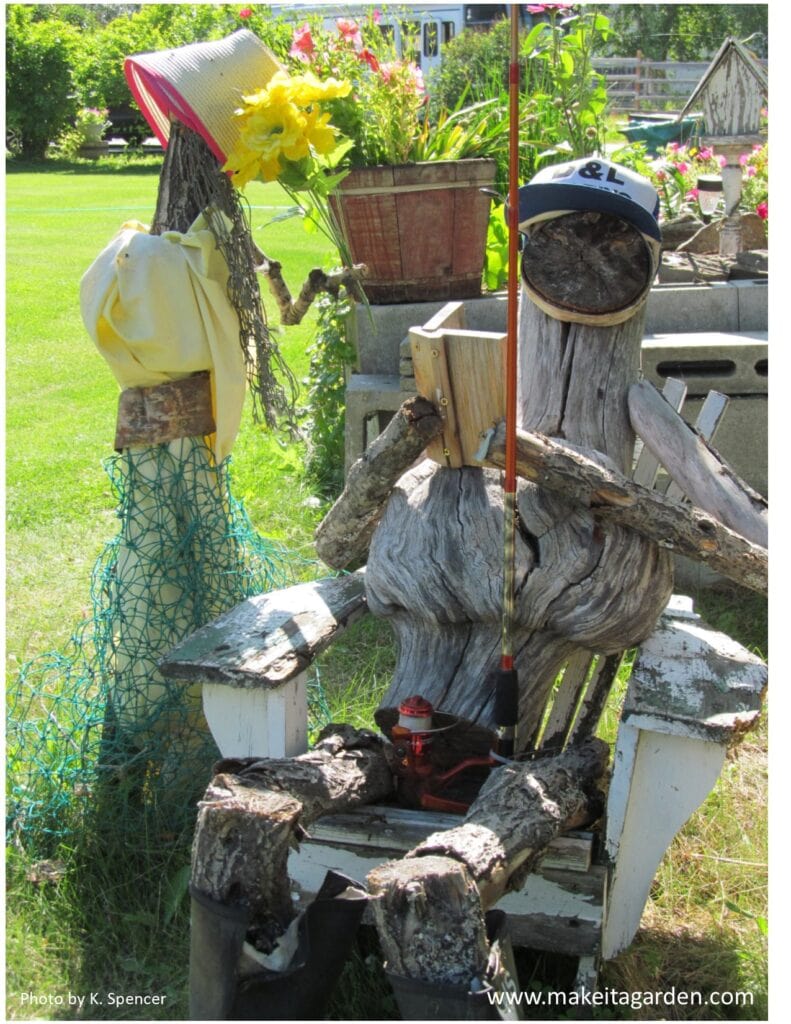
Garden Tour Series
What do you see in a piece of driftwood? To the average eye, this might be like looking at ink spots, or cloud formations. But to Walt Erickson, it seemed quite human. Adding driftwood that had the right shape and length for arms and legs, Walt’s “Woody and Wilma” fish every summer from the Erickson’s front yard.
His wife Karen is the actual gardener extraordinaire. But together they have created beautiful outdoor spaces to relax and enjoy under Alaska’s midnight sun. “This is where we spend the late afternoons”, Walt says, gesturing to some Adirondack-style chairs under a shade tree. “We eat dinner out here all the time.”
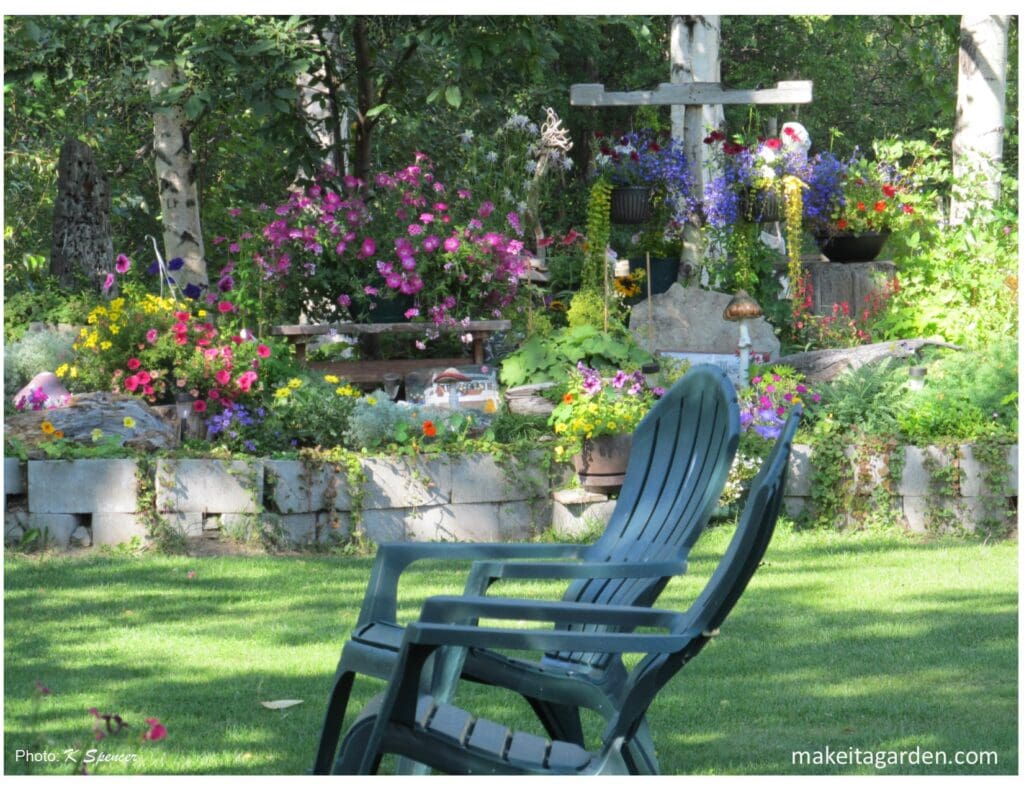
At one time, the Erickson’s place had been homestead land and former hayfields that harken back the Matanuska Valley’s farming heritage. Theirs was one of the first houses in the subdivision where for many years, neighbors were few and far between. Today, there are quite a few neighbors who wave as they pass by or stop to chat and admire the couple’s work. The reward, they say, of having a “public” garden in the front yard is the joy it brings to other people!
Driftwood makes a happy garden
The couple use interesting pieces of driftwood extensively throughout their garden. They collect it from the beaches of Ninilchik (Nih-NIL-chik) and Anchor Point, their camping destination for over 35 years. The figurines like “Woody and Wilma” are the result of a little family contest between Walt and his brother to see who could make the best art out of driftwood.
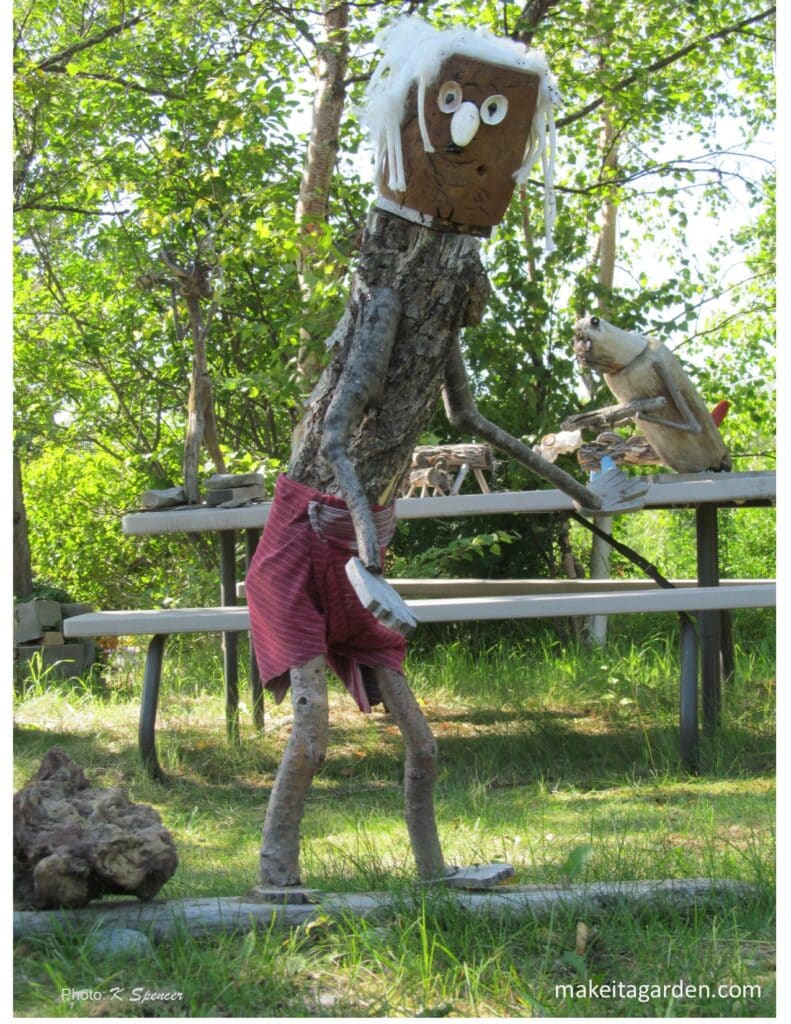
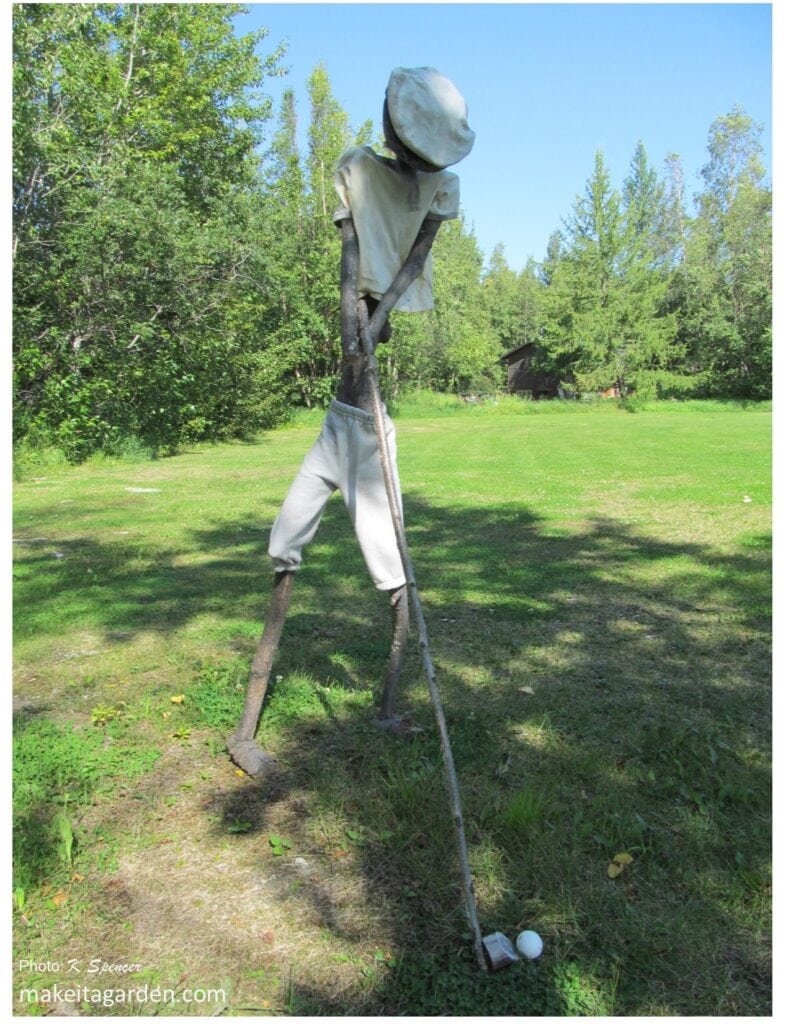
“Surfer Dude” reflects the couple’s favorite vacation spot in Maui. His eyes and nose are seashells. Walt cut out hands and feet with his little bandsaw. Tiger Wood is another of his whimsical driftwood sculptures. “Wood” is a play on words, (no ‘s’).
What’s more, all of the driftwood pieces are in their natural state. The bend of a knee or the crook of an arm are pieces the Ericksons’ found that had just the right contours. It takes practice to fine-tune one’s sense of imagination. Eventually, it becomes almost impossible for them to look at a piece of driftwood and not see something else in it.
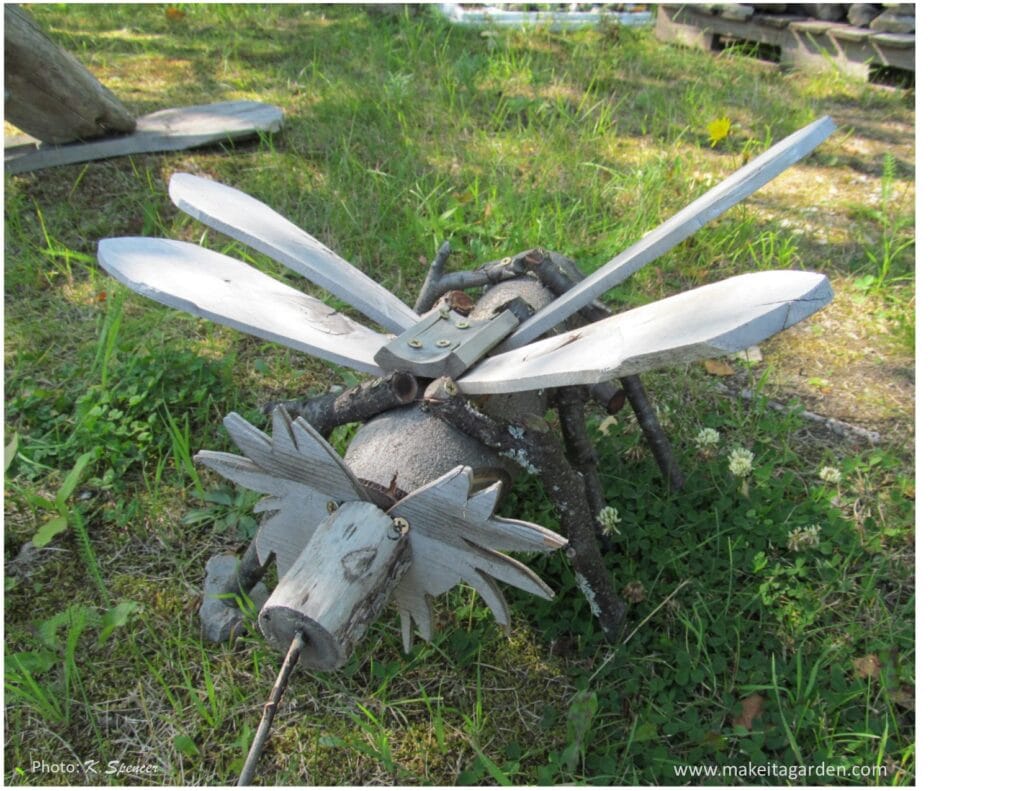
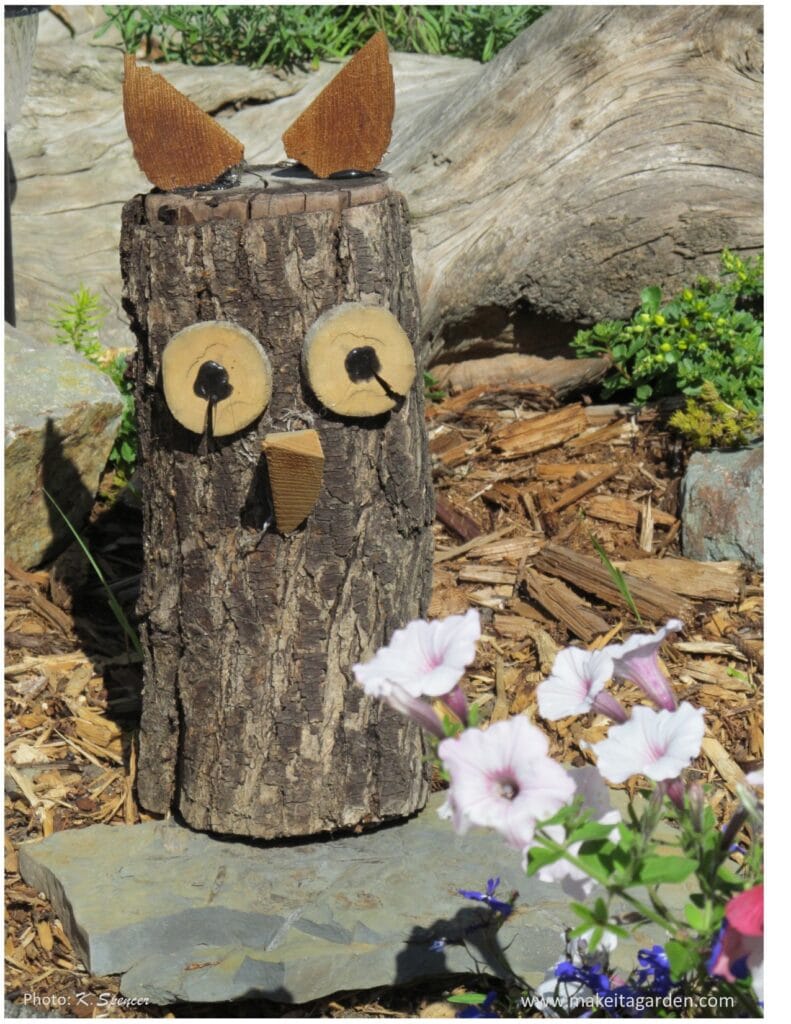
Everyone loves “Hoot”, the owl. Walt said he wants to make a Mrs. owl for Hoot and name her “Annie”. That way, he chuckled, the owl couple can be known as “hoot ‘n’ annie”. (note: a ‘hootananny’ was a term common in the 1950’s and 60’s for an informal session of folk singers who performed for their own enjoyment, often in front of an audience)
With driftwood accumulating, Karen grew concerned that her garden might take on too much of an ocean-theme. “And we don’t live anywhere near the ocean” she said. But her worries would soon subside as she discovered that the natural tones of the driftwood blended in nicely with the woodland-cottage character of her garden.
Many ways to use driftwood
Karen is selective with the driftwood pieces she adds to her garden. She chooses them based on their size and shape and texture. They don’t all look the same and add variety as accent pieces as well.
You would think setting a hunk of driftwood out in the garden would be easy. But which side looks the best? Do you lay it out flat or stand it upright on end? To do it in such a way as to have the right artistic appeal is a bit like hanging a picture on the wall: a little to the left. Just a tad to the right. Up a bit. Perfect!
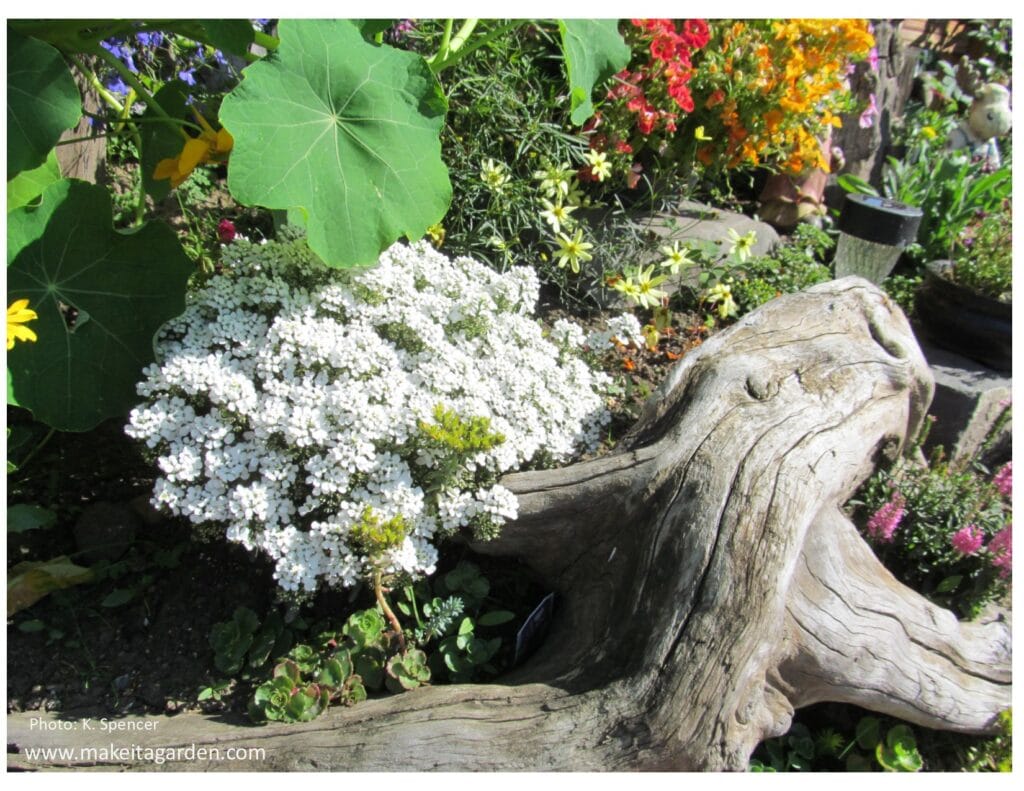
1) Retaining Wall
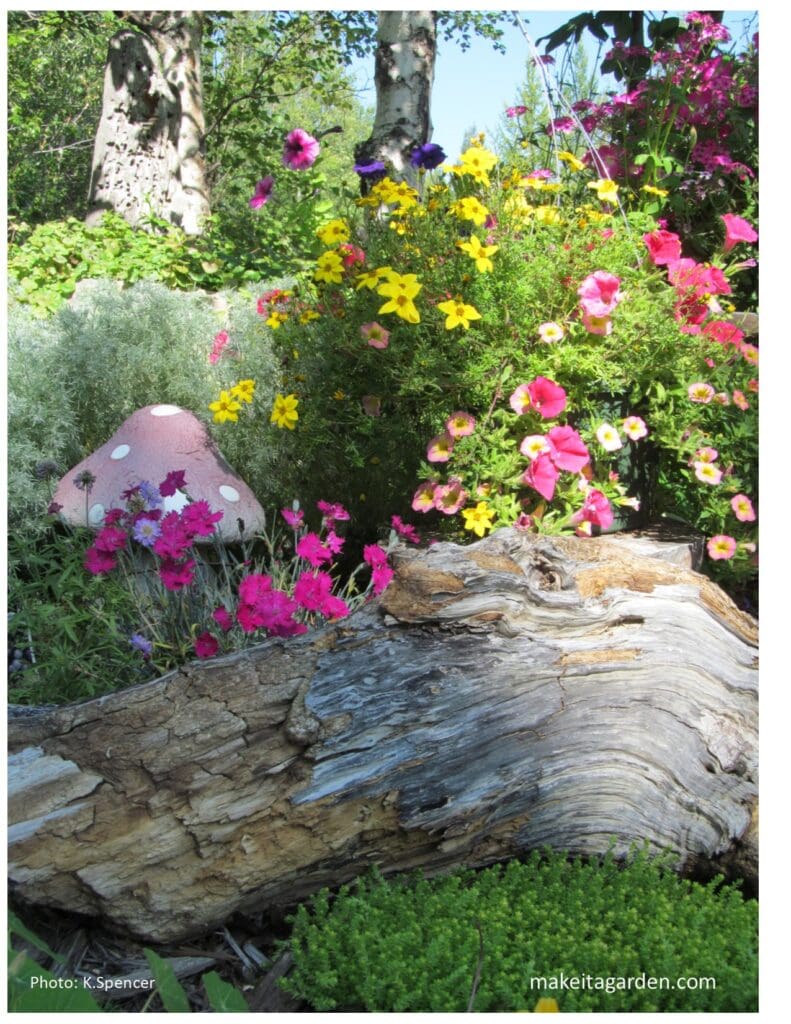
Driftwood makes a happy garden. Karen uses different pieces in different ways. For instance, a bulky segment of an old log serves as a retaining wall. This puts her bedding plants at different levels in the garden which creates a lot of interest for showcasing her flowers. The mushroom garden art in this grouping (photo above) really compliments the scene.
2) Planter
A long, decaying log filled with potting soil becomes an ideal planter. Not everything needs to be in pots. Take a walk in the woods and you’ll see moss, ferns and sometimes tiny flowers growing out of an old log. So, using one as a planter gives your garden a more natural look. Additionally, some plants thrive on the nutrients they derive from rotting wood.
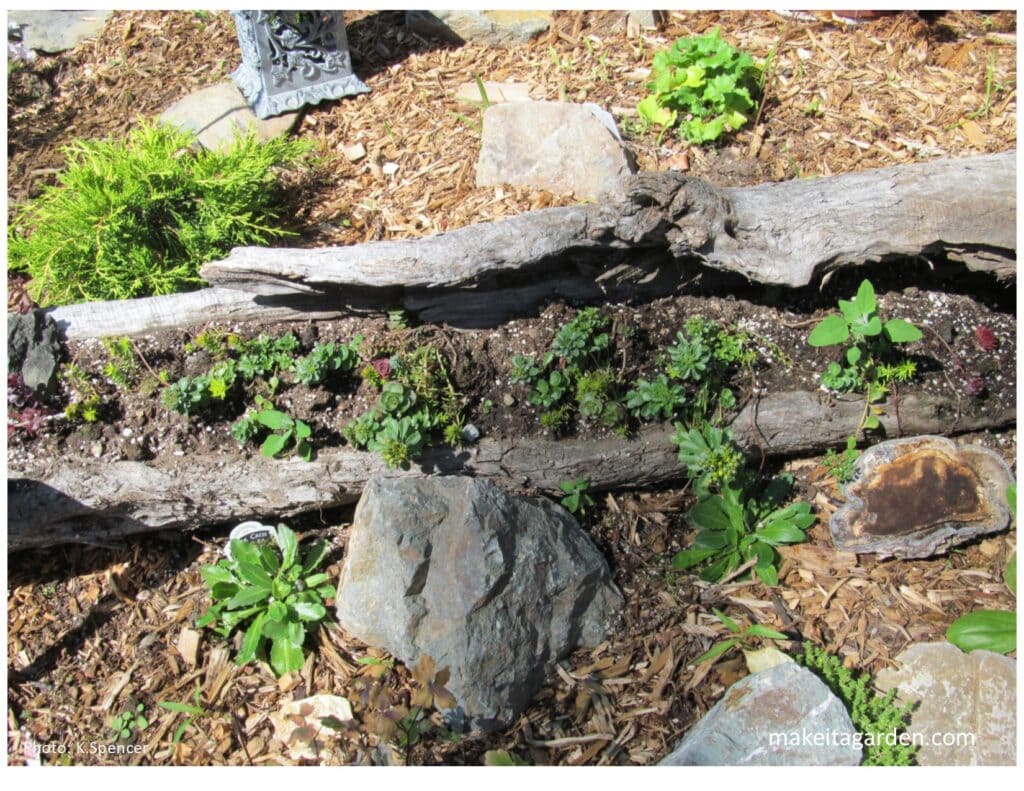
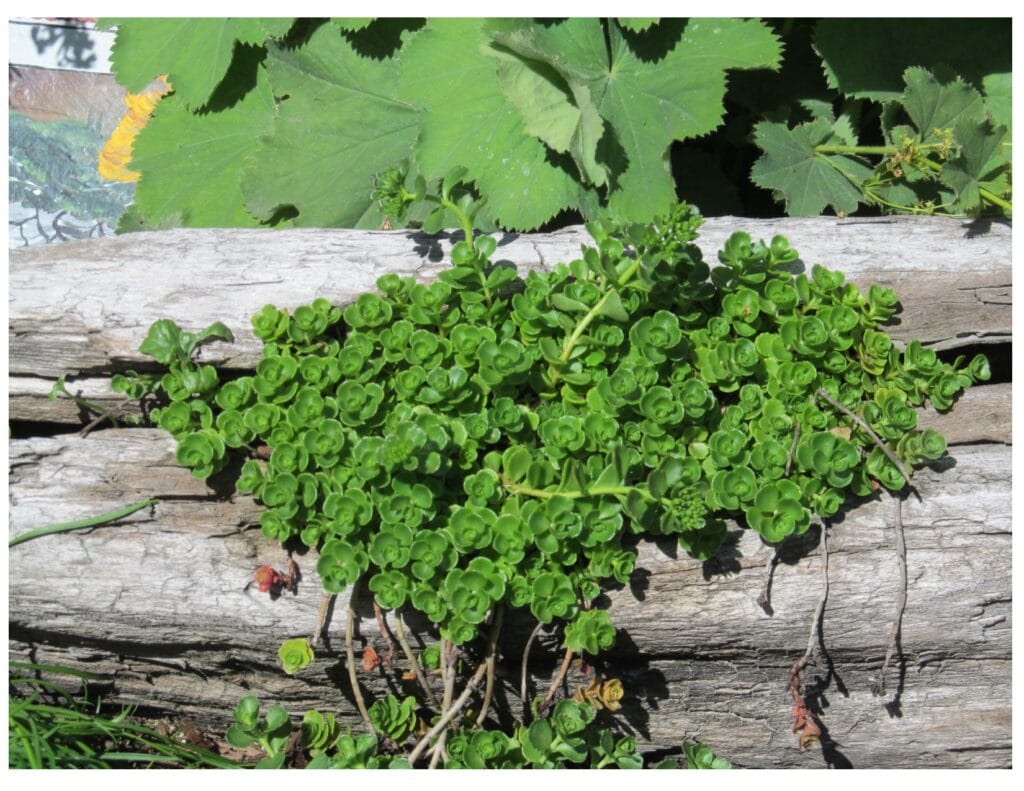
Artistic Driftwood
3) Accent piece
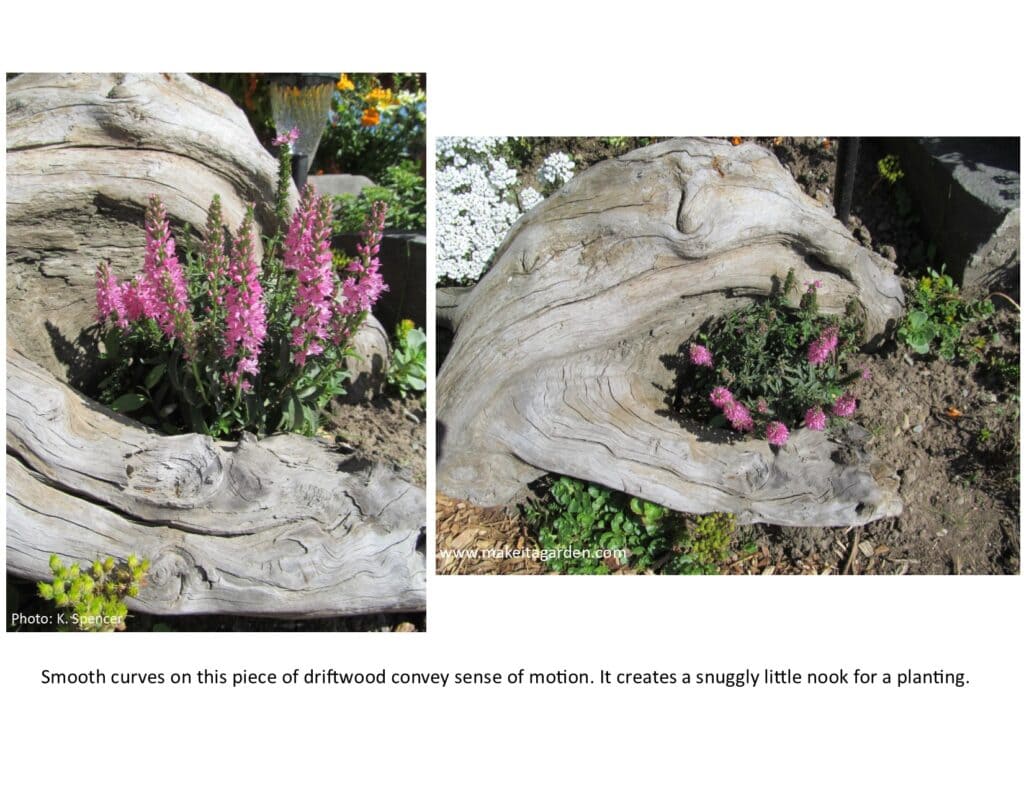
(Above) This smooth piece of driftwood conveys a sense of motion. It’s just the right shape and dimension to give flowers a little nook all their own. It’s hard to tell whether the driftwood accents the flowers or the flowers accent the driftwood. They go hand-in-hand.

4) Sculpture
(Below) A large, 4ft log has a lot of humps and bumps. Yet it’s rich texture and character is exactly why Karen instinctively placed it as a sculpture in her newest flower bed.
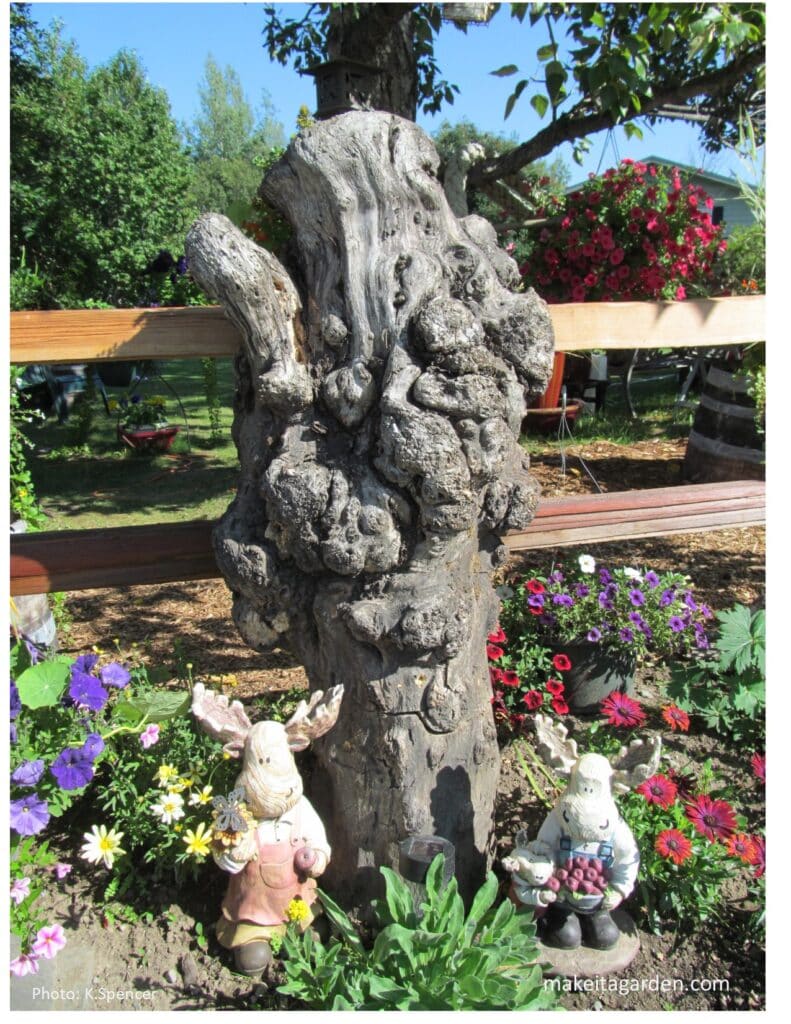
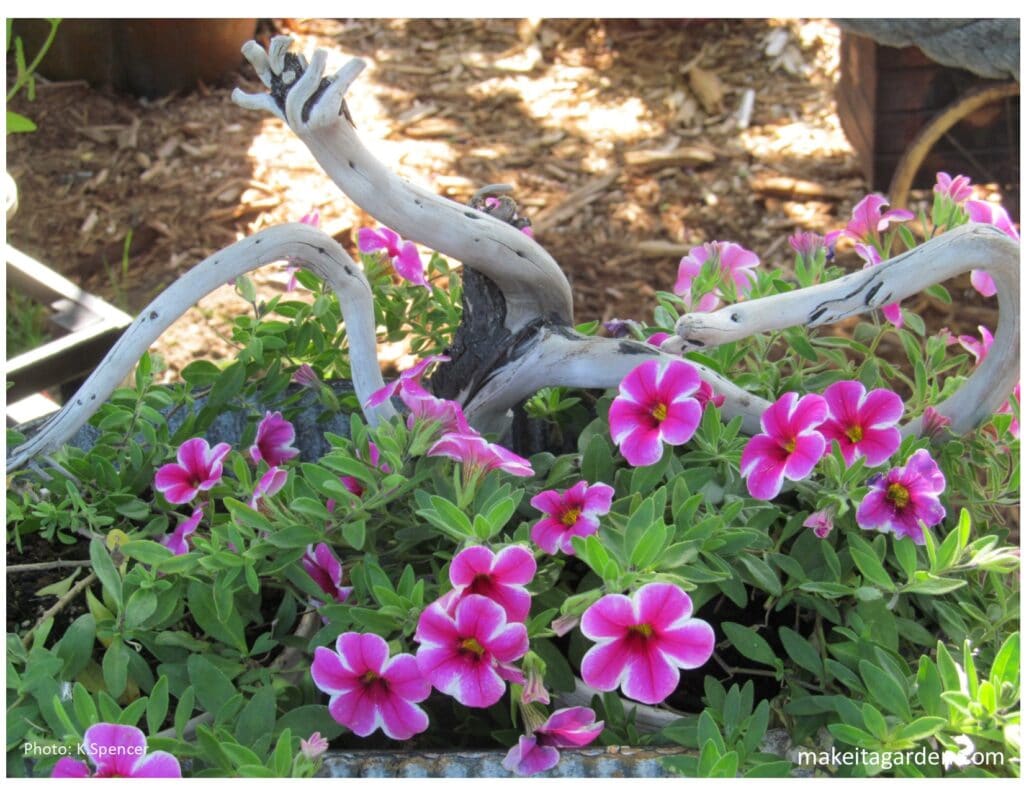
Smaller pieces of driftwood such as tree roots often have the craziest configurations. Their fanciful arcs and curves make eye-catching accent for potted plants and flowers.
Taking it all in
Who knew there were so many ways to use driftwood in the garden? Some pieces are just right for a little retaining wall. Those with splits or openings down the middle could make a natural planter. While others have wild shapes or features that make unique sculptures or accent pieces.
So often, driftwood is associated with nautical or beach-themed gardens. But as Walt and Karen discovered, it’s also perfect for adding some character to woodland and cottage style gardens as well.
So the next time you’re out beachcombing, try exercising your imagination. What do you see in a piece of driftwood? You might even come up with your own version of ‘Woody and Wilma’!
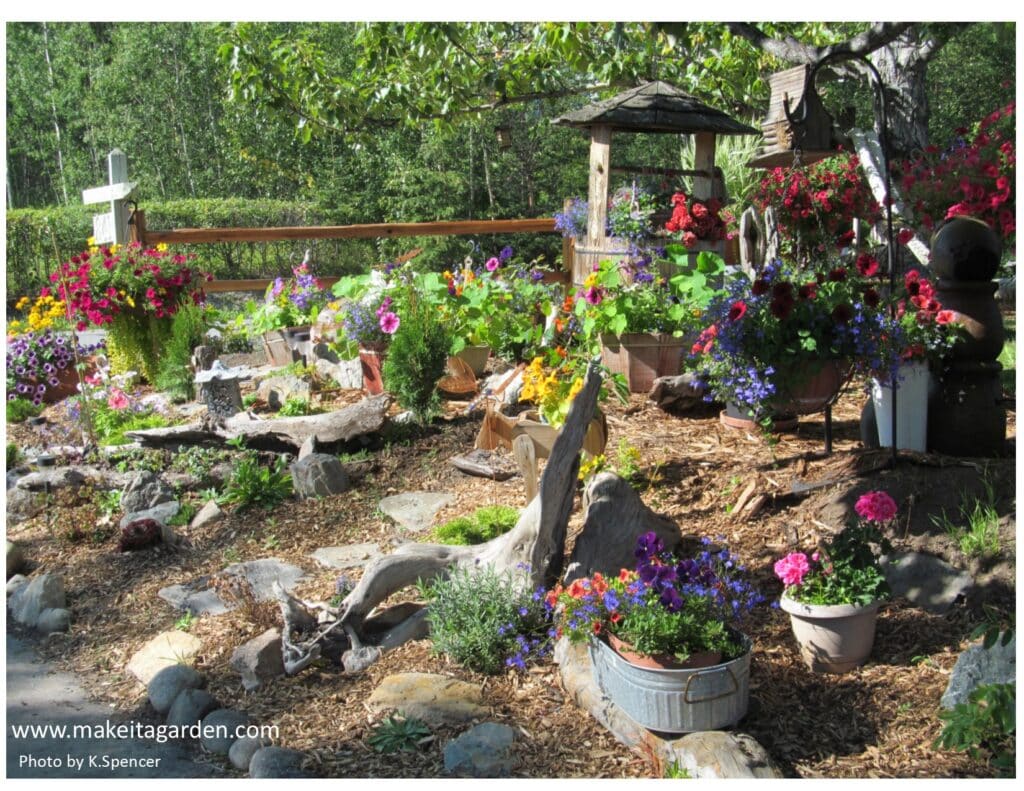

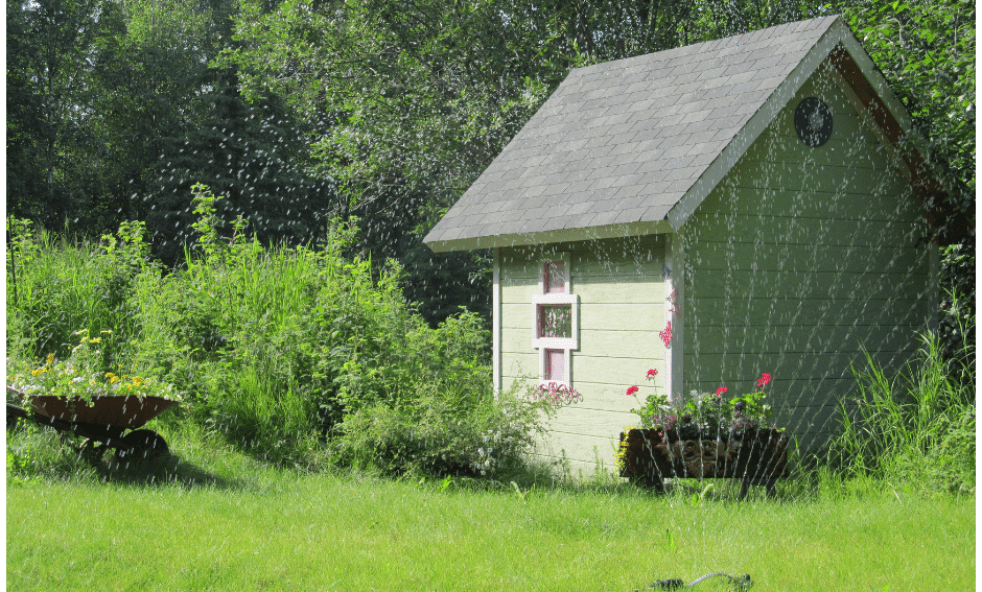
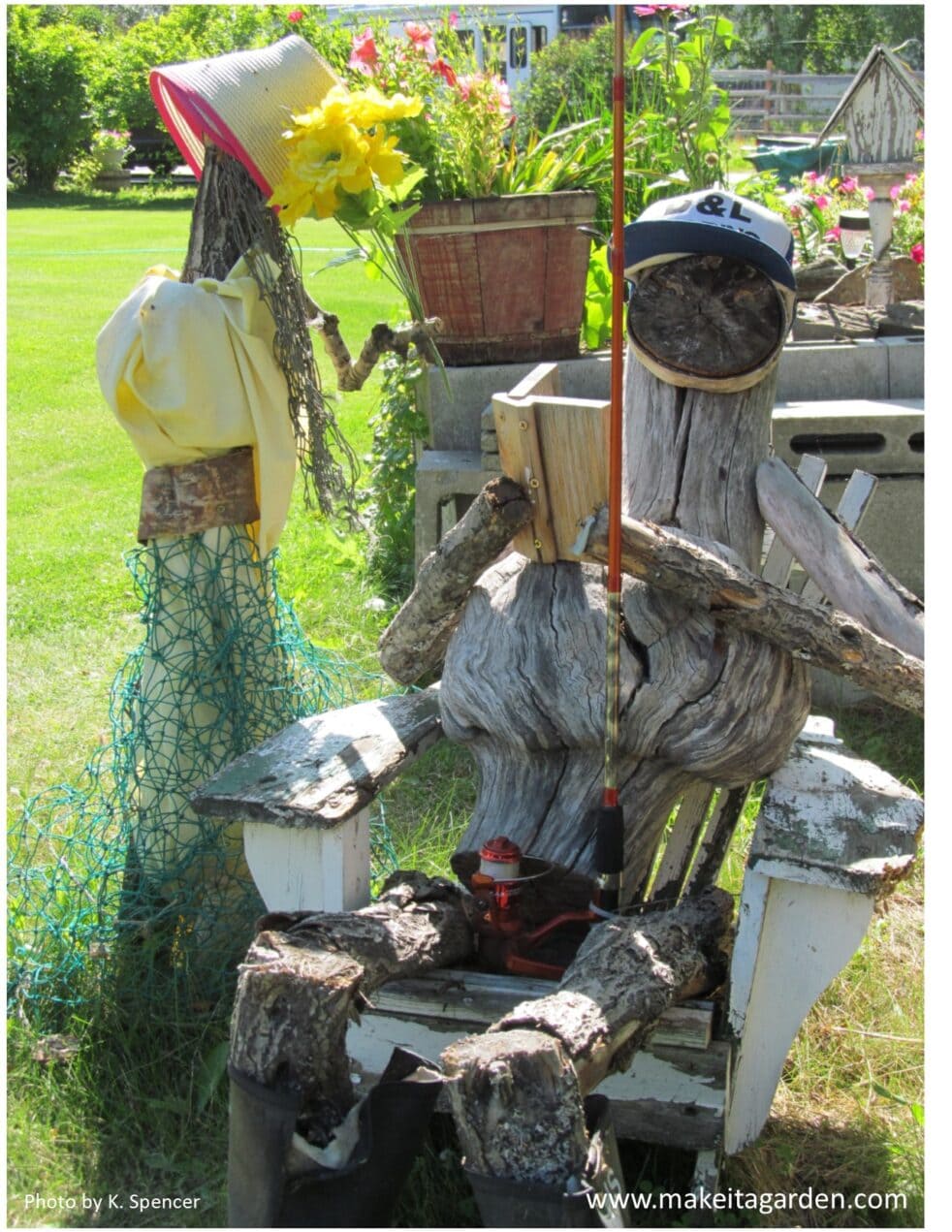
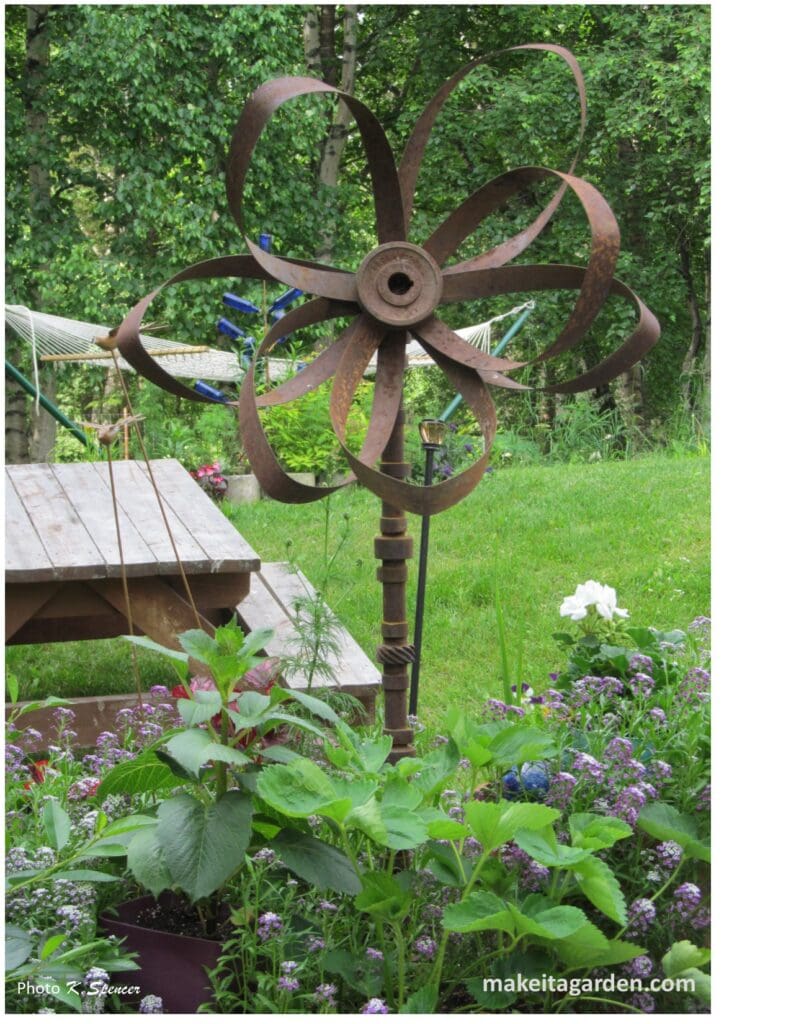
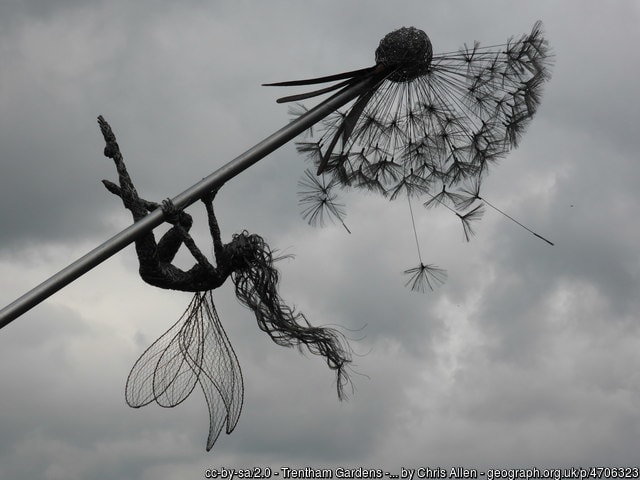
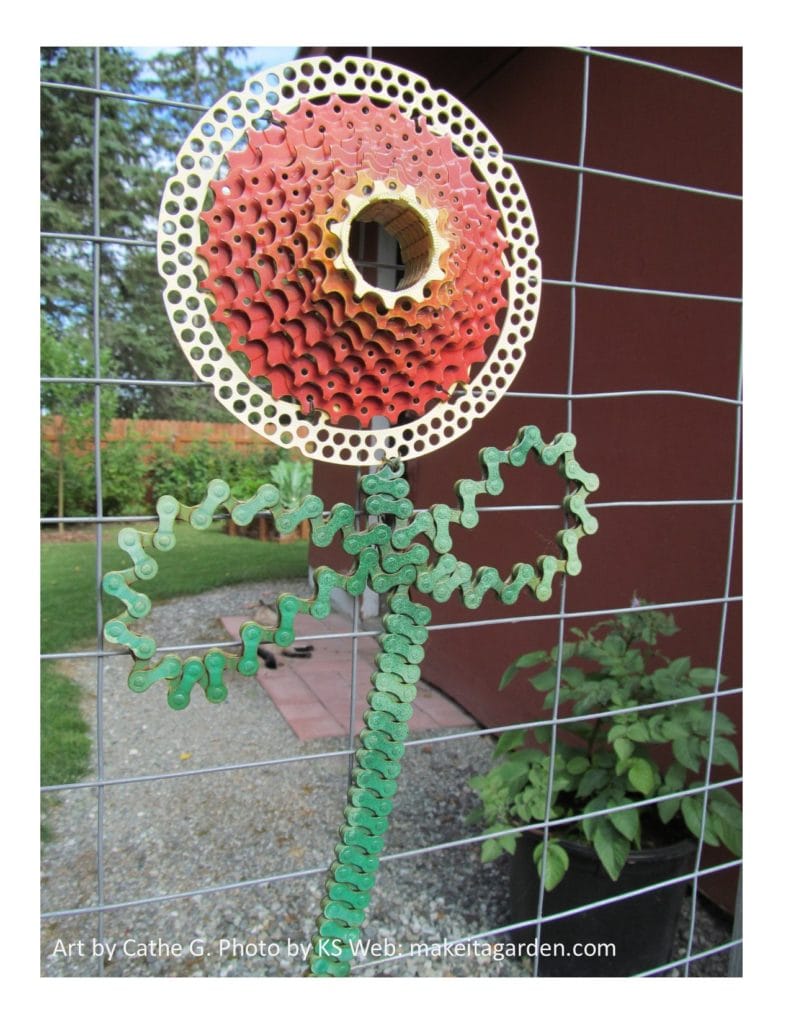
Awesome pieces for garden art. Some of them make me think about scenes from The Hobbit!
Yes, Walt’s characters really add a sense of Fun to their garden. Thanks for your feedback, Lorna!
Loved your article on driftwood in the garden–makes me want to search for some interesting driftwood to add to my garden. Thank you!
Thank you and so glad you enjoyed the story. I thoroughly enjoyed meeting this couple and touring their garden.